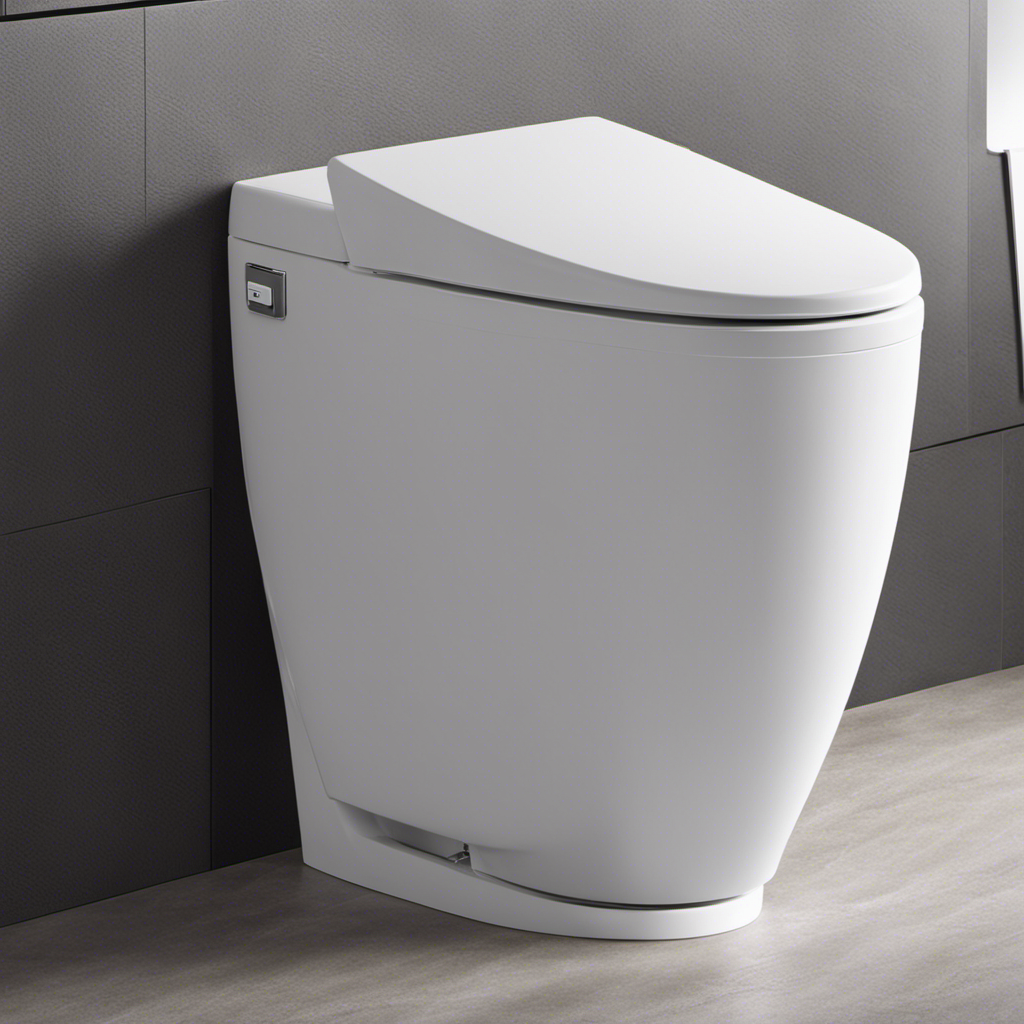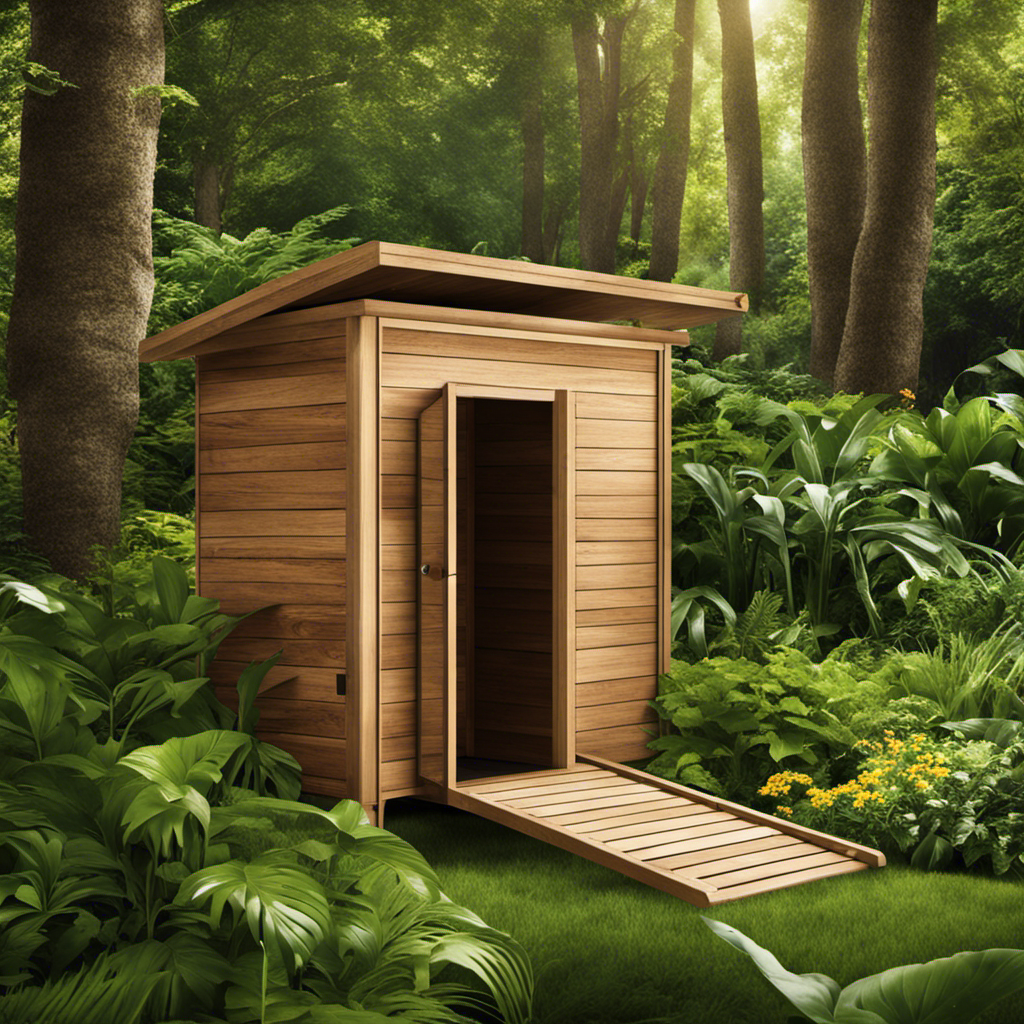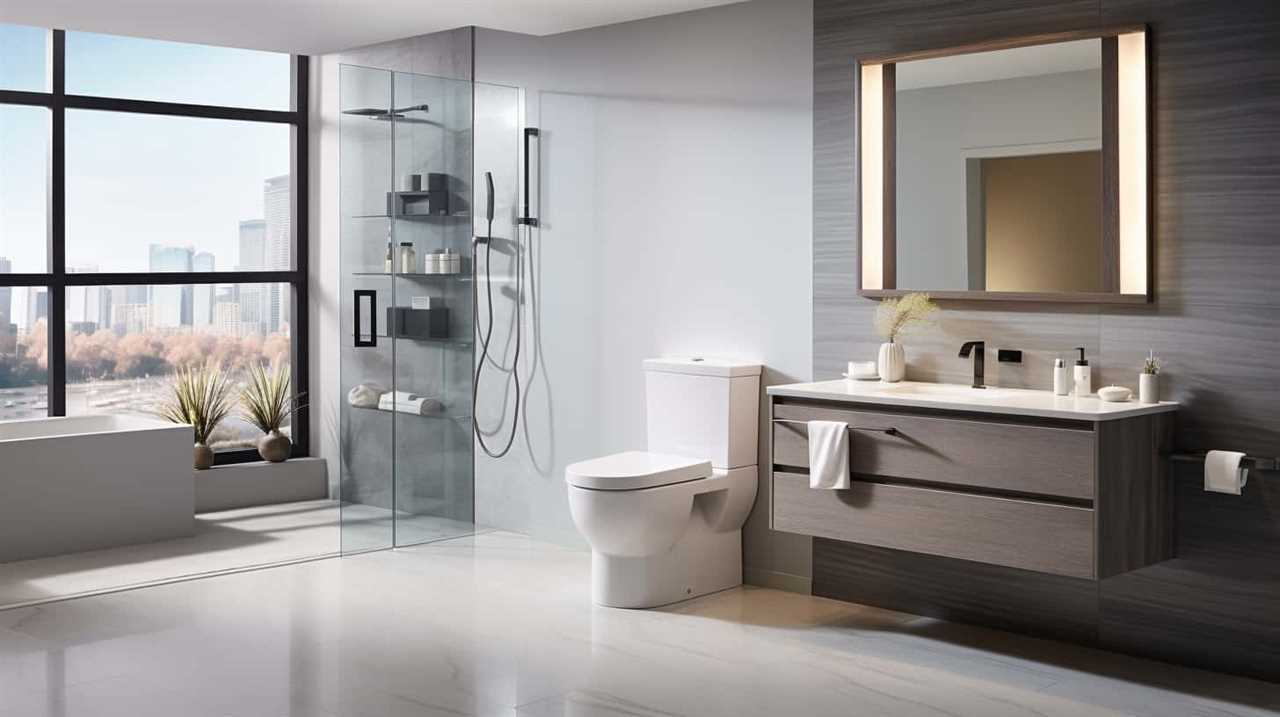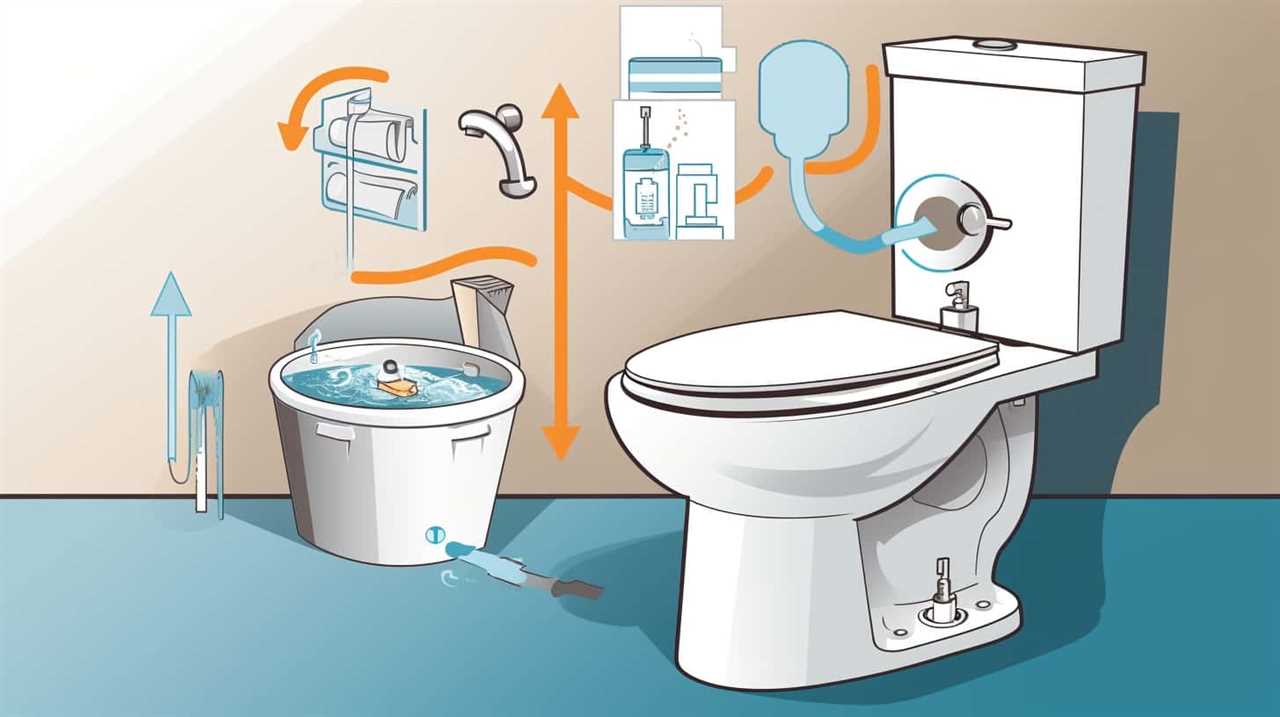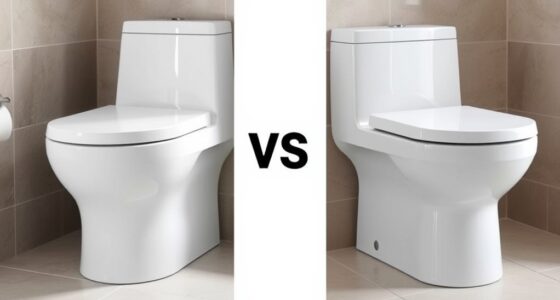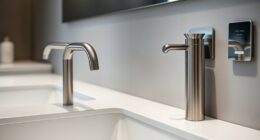I’ve always been curious about eco-friendly alternatives to traditional toilets, so when I discovered that dry flush toilets can save up to 1.6 gallons of water per flush, I was intrigued.
In this article, I will delve into the inner workings of a dry flush toilet and explore the benefits of using one. We’ll also compare them to traditional toilets and discuss tips for proper maintenance.
If you’re wondering if a dry flush toilet is the right choice for you, keep reading to find out.
Key Takeaways
- A dry flush toilet works by creating an airtight seal around waste and depositing it into a specially designed bag.
- It saves water, reduces the risk of leaks and water damage, and is suitable for remote locations or off-grid living.
- Maintenance involves regularly cleaning and monitoring the disposable bag, as well as wiping down the toilet seat and bowl with a mild disinfectant cleaner.
- Considerations for choosing a dry flush toilet include the cost of sealing bags, frequent replacement in high-traffic areas, and potential comfort differences compared to traditional toilets.
How Does a Dry Flush Toilet Work
To understand how a dry flush toilet works, you simply press a button and it seals your waste into a bag with the use of a special mechanism. The process is quite simple yet effective.
When you press the button, the mechanism activates and creates an airtight seal around the waste. This prevents any odor or leakage from escaping. The waste is then deposited into a bag that is specially designed to contain it securely. The bag can hold multiple uses before it needs to be replaced.
Installing a dry flush toilet is also a straightforward process. You need to ensure a stable base and connect the toilet to a power source.
Troubleshooting common issues with dry flush toilets usually involves checking the power connection, replacing the bag correctly, or addressing any blockages in the system.
Benefits of Using a Dry Flush Toilet
You can enjoy the convenience of a no-water toilet that is odor-free and easy to maintain. A dry flush toilet offers several advantages over traditional flush toilets. Firstly, it eliminates the need for water, which not only saves water but also reduces the risk of leaks and water damage. Secondly, the absence of water means no sewage connections are required, making it suitable for remote locations or off-grid living. Additionally, a dry flush toilet is compact and lightweight, making it ideal for small spaces such as RVs or tiny homes. It also requires minimal maintenance, with no need for plumbing or septic tank cleaning. However, there are a few drawbacks to consider. Due to its reliance on disposable cartridges, the ongoing cost of these cartridges can add up over time. Additionally, the lack of water may make it less effective at removing waste compared to traditional flush toilets.
| Advantages | Drawbacks |
|---|---|
| Water-saving | Ongoing cartridge cost |
| Leak-free | Less effective waste removal |
| Versatile for remote locations | |
| Compact and lightweight | |
| Easy maintenance |
Comparing Dry Flush Toilets to Traditional Toilets
Comparing dry flush toilets to traditional toilets, there are significant differences in water usage and waste removal effectiveness.
Dry flush toilets, also known as incinerating toilets, use a unique mechanism to dispose of waste. Instead of using water to flush waste into a sewage system, dry flush toilets utilize a sealing mechanism that traps the waste in a disposable bag. When the toilet is flushed, the waste is sealed in the bag and then incinerated, reducing the need for water and eliminating the need for traditional plumbing systems.
The pros of dry flush toilets include water conservation, as they require no water for flushing, and their ability to be installed anywhere due to their compact design. However, there are cons to consider as well, such as the cost of the disposable bags and the environmental impact of incinerating waste.
Transitioning into the next section, let’s explore tips for maintaining a dry flush toilet.
Tips for Maintaining a Dry Flush Toilet
Maintaining a dry flush toilet is relatively simple and requires regular cleaning and monitoring of the disposable bag.
To keep your dry flush toilet clean, start by removing the disposable bag when it’s full and tying it securely. Dispose of it in a waste bin or follow local regulations for disposal.
Next, wipe down the toilet seat and bowl with a mild disinfectant cleaner. Use a soft cloth or sponge to avoid scratching the surface. For stubborn stains, a mixture of vinegar and water can be effective.
If you encounter any issues with your dry flush toilet, such as a clog or odor, check that the bag is properly sealed and the unit is securely connected. If problems persist, consult the manufacturer’s troubleshooting guide.
By properly cleaning and maintaining your dry flush toilet, you can ensure its optimal performance and longevity.
Now, let’s explore if a dry flush toilet is right for you.
Is a Dry Flush Toilet Right for You?
If a dry flush toilet is what you’re considering, it’s important to evaluate if it aligns with your needs and preferences. Dry flush toilets have their own set of pros and cons that you should consider before making a decision. Here are some key points to keep in mind:
-
Pros of dry flush toilets:
-
They are waterless, which means they don’t require plumbing or a water supply.
-
They are easy to install and maintain, as there is no need for complex plumbing or septic systems.
-
They are odorless and sanitary, thanks to the use of sealing bags that contain waste.
-
Cons of dry flush toilets:
-
They require the purchase of special sealing bags, which can add to the overall cost.
-
They may not be suitable for large households or high-traffic areas, as the bags need to be replaced frequently.
-
They may not be as comfortable to use as traditional flush toilets, as they typically have a smaller seat and less water for flushing.
Considering the cost effectiveness of dry flush toilets, it’s important to weigh the initial investment of purchasing the toilet and sealing bags against potential long-term savings on water bills and maintenance costs. Ultimately, the decision should be based on your specific needs and circumstances.
Frequently Asked Questions
How Much Water Does a Dry Flush Toilet Save Compared to a Traditional Toilet?
Compared to a traditional toilet, a dry flush toilet can save a significant amount of water. The benefits of using a dry flush toilet include reducing water consumption and eliminating the need for plumbing or sewage systems.
Can a Dry Flush Toilet Be Used in an RV or Boat?
In an RV or boat, using a dry flush toilet has its pros and cons. Compared to composting toilets, dry flush toilets require no water and have no odor, but they need frequent emptying.
What Kind of Waste Can Be Flushed in a Dry Flush Toilet?
Composting toilets like a dry flush toilet can handle various types of waste, including solid and liquid waste. They are an excellent option for camping trips due to their convenience, odor control, and minimal environmental impact.
Are Dry Flush Toilets Easy to Install?
Yes, dry flush toilets are easy to install. They require minimal maintenance and have many benefits. They use a self-contained system that seals waste in a bag, eliminating the need for water or plumbing connections.
How Often Does the Cartridge in a Dry Flush Toilet Need to Be Replaced?
The cartridge in a dry flush toilet needs to be replaced about every 15-17 flushes. This frequency ensures optimal performance and hygiene. Using a dry flush toilet offers benefits such as water conservation and odor control.
Conclusion
In conclusion, I’m convinced that dry flush toilets are the way to go. They have a simple yet effective mechanism and offer numerous benefits. Maintenance is easy, and they’re a perfect fit for those seeking an efficient and environmentally friendly option.
If you’re tired of dealing with messy and outdated toilets, give the dry flush toilet a try. You won’t be disappointed!
